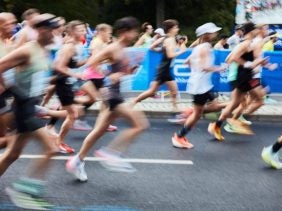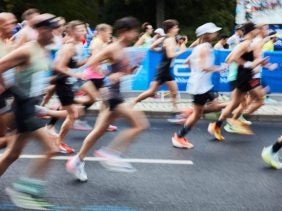What to Eat Before, During, and After a Race
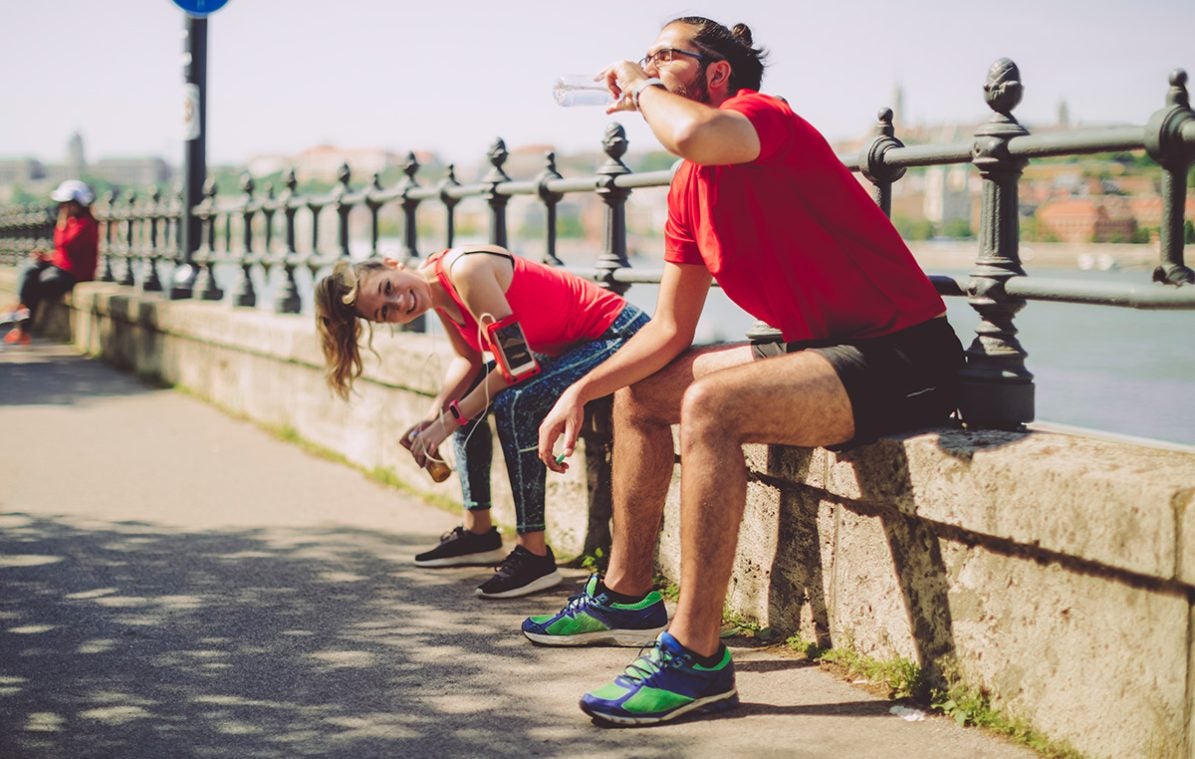 Eva Katalin
Eva Katalin
What you eat is an important part of reaching peak performance and impacts how you’ll feel during your run. Spoiler alert: On race day and just before, you’ll need to play by a different set of rules.
Your diet is how your body gets its energy and nutrients, which is why it’s an essential part of your running and athletic success. And, of course, your health. This article is all about nutrition that allows you to run as fast as possible, for as long as possible, and without any breaks, if possible. And guess what! It’s finally time for white flour and juice instead of whole grains and whole fruits!
A well-planned diet throughout the training and competition phases helps prepare your body to do its best on race day. The risk of stomach cramps, side stitches, and toilet breaks can be reduced with personalized race nutrition in the days leading up the race and on race day itself. Nothing is more annoying than a bathroom break when you’re in top shape and ready to make your best time.
So it’s worth spending a little time planning your nutrition on and around race day. Then all you need is the discipline to follow through. And you’ll definitely have that after 12 weeks of training.
Race Day Nutrition Begins During Training
To set yourself up for success and fun during the race, it’s not only what you eat on race day itself that counts, but also your nutrition during the 12-week half marathon preparation phase. Your body needs energy and nutrients to train, recover and hit peak performance on race day.
These are the most important food factors for success at a glance:
- Meet your energy needs by eating slightly more calories than you’re burning.
- Make sure you have a sensible distribution of macronutrients and adjust the ratio of carbohydrates and protein to your training plan.
Covering your micronutrient requirements. The nutrients that are especially important for runners are calcium, iron, zinc, and magnesium, omega-3 fats, and of course, vitamins.

The easiest way to make this happen is to consistently incorporate whole grains, legumes, and pseudocereals into your diet. Whole grains, quinoa, millet, and lentils are all packed with high-quality carbs, your body’s most important source of energy.
Targeted training and a high-carb diet can increase your muscles’ glycogen stores so you have more energy for longer. At the same time, a balanced diet will help you meet your micronutrient and amino-acid needs. The competition preparation phase is the best time to eat really well and healthy without worrying about eating too many carbs.
Pre-Race Diet: Lightweight energy all the way
You’ve laid the perfect foundation for your best time in your training phase. Now, in the last week before the race, it’s time to orient your nutrition plan to the competition itself with these three guidelines:
- Avoid dehydration like the plague. Make sure you drink enough every day throughout the week. That means at least 1.5 liters a day and one more liter for every hour of exercise.
- Plan out your race nutrition. Do you have all the energy gels, snacks, and drinks you want to use during the race and the right amount of them?
- Eat a healthy diet that is high in carbs and meets your nutrient requirements.
Replace cakes, chocolate, and unhealthy foods with high-protein snacks. Check out our free recipe collection for some healthy inspiration. Or, if you’re in a hurry, our ready-made fitness snacks are the perfect solution.
48 hours before the race – begin the food countdown!
The last 2 days before the race are especially important. This is the time to fill up your stores with readily available energy and consume as little fiber as possible. Replace whole grains with refined flour products, fruit with freshly squeezed juice, and avoid eating too many raw vegetables, fast foods, and other foods that are difficult to digest. Now’s the one time it’s ok to eat fewer vegetables.
Background: Dietary fiber speeds up digestion, which means you might have to take an unwanted break under stress. In the worst-case scenario, you won’t have finished digesting before the race and have to face the consequences of your too-healthy meal the night before with stomach cramps, side stitches, and needing a bathroom break. So enjoy the opportunity to eat baguettes, pasta & other high-carb food for once.
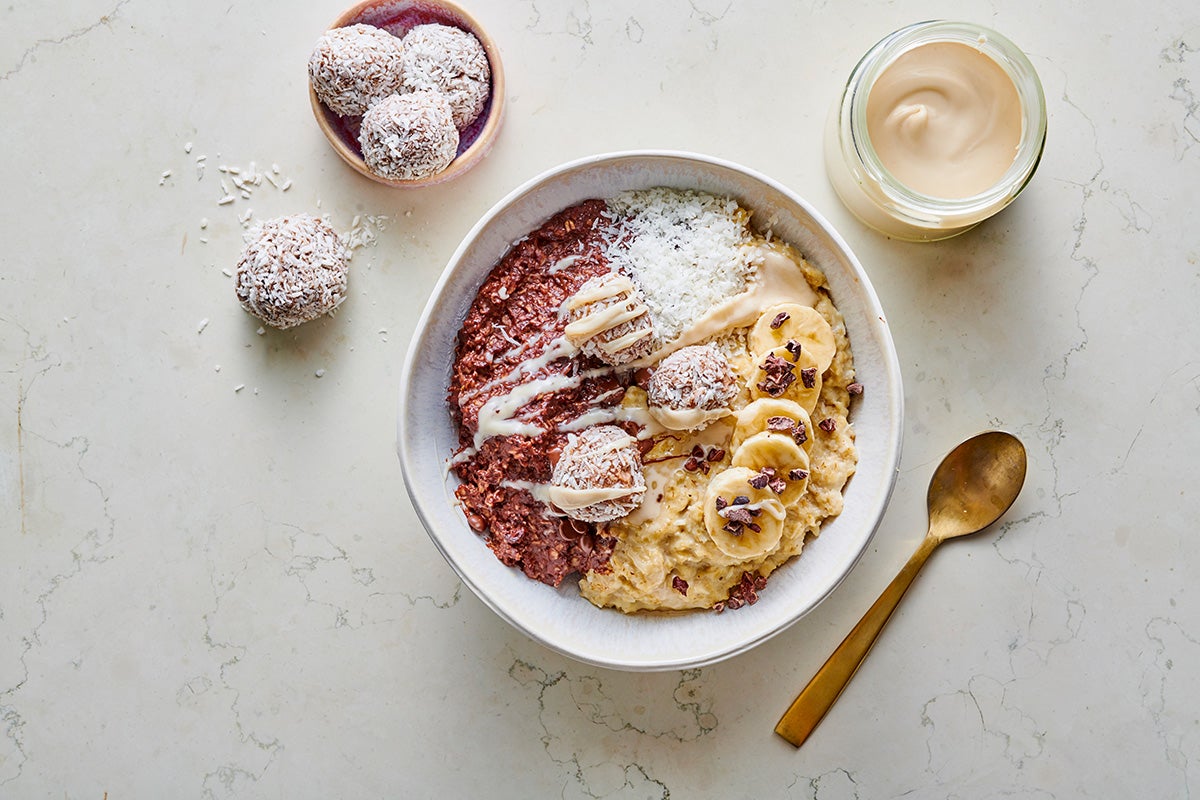
Pre-race food: evening before and morning of
Most competitions take place in the morning. That means you should eat a high-carb meal that’s also high in essential amino acids and low in fiber in the evening. Eat your dinner early enough that you have enough time to digest and use the bathroom again the morning before the competition – preferably at home in peace.
It’s best to have your carb loading meal 2 nights before the run and eat only a moderate portion on the night before. More carbs than you can digest won’t make you any faster, they will only force you to take breaks.
Breakfast is your last chance to replenish your glycogen stores. That’s why it should be high in easily digestible carbs, BCAAs, and almost free of fiber and fat, as well as easy to digest.
A perfect breakfast before the competition could be:
- white bread with honey or jam
- bananas
- dried fruit
- a small serving of oatmeal
- BCAAs capsules or a BCAA drink that works for your body
Avoid cheese, meat, whole grains, nuts, vegetables, and anything else that might be too heavy on your stomach during a run. There’s less blood flowing to your stomach during exercise and your body has no energy left for digestion, so extra food in your belly can lead to side stitching, cramping, bowel movements, and decreased performance.
Dairy products, carbonated drinks, and too much acidic food are also a no-go – they can cause heartburn under stress. Stick to a simple breakfast and eat enough to keep you full but not too full.
Important tip: Use morning training runs to test what foods are good for your digestive system and how much you should eat and when.
When should I eat before the race?
This depends a lot on how your unique digestive system works. As a guideline, you should prepare by eating breakfast about 3-4 hours before the competition. 30-45 minutes before the race, a light high-carb snack of bananas, dates, or energy bars is ideal. If you don’t want to or can’t eat more, go for an electrolyte drink with dextrose and maltodextrin.
Be sure not to eat this snack too early because carbs cause your insulin levels to spike. This increase is perfect for when you need energy in your cells, but counterproductive if you snack so early that you miss the peak of the insulin response.
Since you’ve been drinking enough all week, now you only need to drink enough to keep from being thirsty. Drinking too much water at once can mess up your electrolyte levels and promote cramps. About half a liter of water around breakfast and a medium-sized glass just before the race work well for most runners.
Eating During the Race: Carbs keep you going
For races under 60 minutes, you usually don’t need any additional energy or nutrients. If the race is longer than that, add some energy in the form of simple carbs after about 60 minutes. The best combination is maltodextrin and dextrose, which is the mix in most energy gels. Small pieces of ripe bananas or soft dates without the pits are also a good choice of snack. Be sure to test out which products are best for you beforehand.
In summer or when you sweat a lot, electrolyte drinks are useful. These not only compensate for the loss of energy, but also for the loss of minerals such as sodium, potassium, and magnesium.
In some small races, you can deposit your own drinks in advance at aid stations. Alternatively, some running belts come with many small bottles for carrying your drinks in the perfect sizes. Most of these belts also have space for additional snacks and your race number.
Eating After the Race: Energy, protein & micros
Now is the time to give your body back everything it lost during the race. And you want to do it as quickly as possible. This mostly involves carbs, protein, minerals, and fluids. Nutrients can be absorbed particularly well within the first 30-60 minutes after training.
However, especially in the first 30 minutes, your stomach probably won’t be ready to digest a solid meal again. Liquid nutrient drinks like a strawberry-banana shake or Recovery Aminos are the perfect way to kickstart your recovery after the finish line.
After this initial recovery phase, it’s time to take a shower and celebrate your success before getting ready to eat. By that point your digestion should be back to normal, so you can eat as healthy and wholesome as possible and provide your muscles with high-quality protein for recovery.
Some excellent post-race meals include:
- Mushroom Bourguignon
- Vegan Protein Okonomiyaki
- High-Protein Vegan Beet Burger
- Fried Rice with Marinated Tempeh and Peanut Sauce
- Vegan Meatballs
- Protein Pasta Salad with Beetroot Dressing
- Vegan Protein Pasta Buddha Bowl
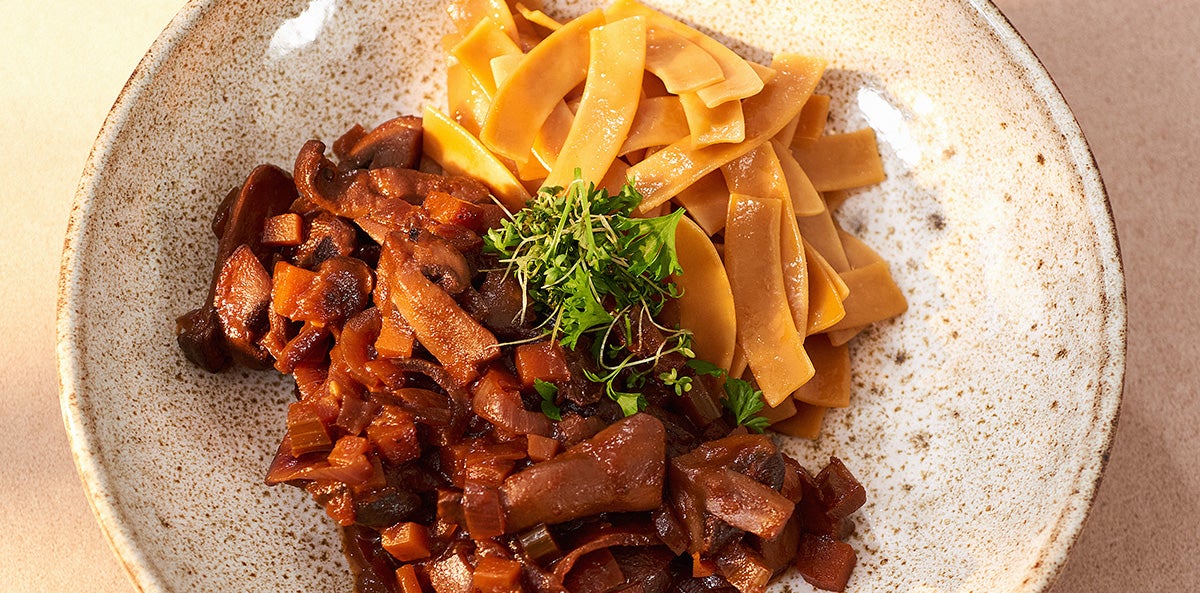
Conclusion
- Proper nutrition on race day and in the last days before the competition are crucial for performance and recovery.
- Nutrition plans for before and during a race are different from normal healthy diets.
- During the training phase and after the competition, a classic healthy nutrition plan adapted to your body’s unique needs sets the foundation for your progress and recovery.
- Be sure to test out the foods you digest well before, during, and after running while you’re in the training phase. All of the textbook knowledge in the world can’t replace finding out how your body, with its unique composition, responds.
- Learn to listen to your body during training. With some practice, you’ll figure out what it wants to eat and drink and when.
More healthy living tips from foodspring:
- Side Stitch: Prevent them & 6 instant ways to beat them
- Muscle recovery after your workout: 6 regeneration rules
- Mental Preparation for Your Half-Marathon
- It’s (Half) Marathon Season! Get Ready for Your 1st Race with This Training Plan
- How to Start Jogging: Everything you need to know
Sources for this article
We at foodspring use only high-quality sources, including peer-reviewed studies, to support the facts within our articles. Read our editorial policy to learn more about how we fact-check and keep our content accurate, reliable, and trustworthy.































